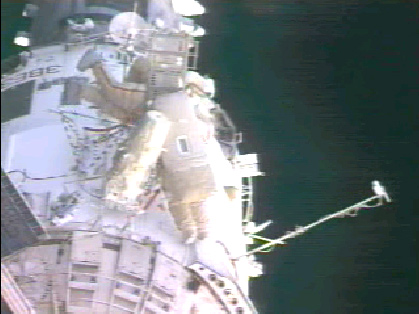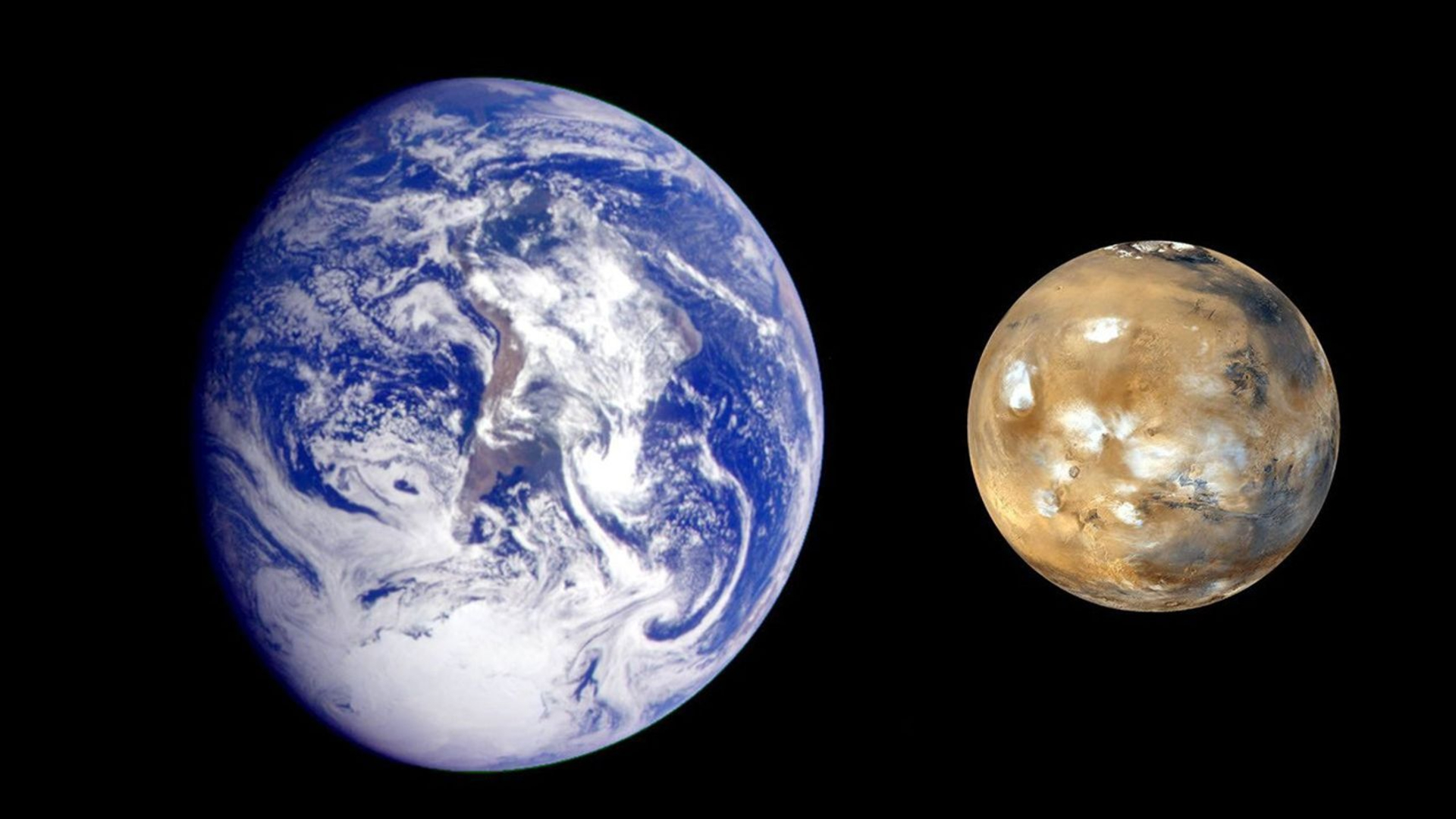First Spacewalk a Success for Space Station Crew

The crew of the International Space Station (ISS) is safely back inside the orbiting facility after a busy spacewalk to install new equipment to its exterior.
ISS Expedition 10 commander Leroy Chiao and flight engineer Salizhan Sharipov reentered the station at 8:11 a.m. EST (1311 GMT), logging five hours and 28 minutes in space during the extravehicular activity (EVA).
"Everything is perfect," Russian flight controllers told the Expedition 10 crew as they completed their work. "Thanks to you, good job."
Clad in nearly identical, Russian-built Orlan spacesuits with red stripes - Chiao's suit sported a U.S. flag for identification - the Expedition 10 crew opened the outer hatch of the station's Pirs docking compartment at 2:43 a.m. EST (0743 GMT).
"Hello space, my old friend," said Chiao, a spacewalk veteran, as he stepped outside the station.
The extravehicular activity was the fifth spacewalk of Chiao's career, though it marked Sharipov's first foray outside of an orbiting spacecraft.
"It's so cold, and so beautiful," said Salizhan as he followed Chiao out the hatch.
Breaking space news, the latest updates on rocket launches, skywatching events and more!
Chiao and Sharipov worked swiftly to complete all of their spacewalk goals, including the installation of a new work platform and test robot outside the Russian-built Zvezda service module. They also relocated a Japanese space environment exposure experiment, plugged in an antenna for the robot test bed and studied ISS vents used by the station's Elektron oxygen generator and other life support systems.
The Expedition 10 crew spoke Russian to match their Orlan spacesuits during the EVA, and communicated with ISS flight controllers at the Korolev Flight Control Center near Moscow. The ISS sent down more live video of the spacewalk than typical Russian-managed spacewalk, despite an antenna that station engineers had thought would be too cold to transmit images, NASA commentators said.
Getting to work
Today's spacewalk, which began at the Pirs docking compartment, had the Expedition 10 crew move about 1000 feet by hand to reach the first Zvezda module worksite.
There they installed a universal work platform to which they attached the German-built test robot Rokviss, short for Robotic Components Verification on the ISS. The two-jointed robot has an onboard camera and manipulator arm, and is designed to test the application of lightweight robotic systems that may help support the station and other spacecraft in the future.
Chiao and Sharipov installed Rokviss and its associated antenna easily enough, but had to return to the worksite at the end of their spacewalk to refasten power cables that did not connect properly in the first attempt. They expressed relief when the refastening fix worked, especially since they would have had to take the whole instrument down and return it inside the ISS if it did not function.
Space station crews can direct the Rokviss using the station computer, but flight controllers near Munich, Germany will rely on the antenna to operate the research robot remotely.
To make room for the antenna, the Expedition 10 crew relocated a Japanese experiment called MPAC SEEDS that exposes various materials to the space environment. They also installed three canisters filled with microorganisms - Russia's Biorisk experiment - to study how space conditions affect the small lifeforms.
Elektron residue
During the spacewalk, Sharipov also inspected three vents used by the space station's Elektron oxygen generator and other systems to expel waste matter into space. He reported a honeycomb-like white residue on the Elektron vent and brownish residue on the other two while taking photographs of the entire area.
"The whole surface of the vent is covered with a build-up," Sharipov said of the Elektron region, adding that the residue was about 3 millimeters thick in some areas.
While Russian flight controllers and engineers aren't yet sure if the residue may be responsible for some recent hiccups in the Elektron device's performance, but hoped that the images taken by Sharipov took of will help answer that question.
With the completion of today's spacewalk, Chiao has amassed 31 hours and 34 minutes of time in space and Sharipov -- it being his first EVA -- five hours and 28 minutes. Their spacewalk brought the grand total of time spent working on the station's exterior up to 343 hours and 45 minutes, NASA officials said.
This spacewalk was the 57th spacewalk for ISS maintenance and the 32nd staged from the space station itself. It was the 14th EVA to begin from the Pirs docking compartment.
Chiao and Sharipov have tomorrow off after today's busy activities, but haven't seen their mission's last spacewalk. Their second and final EVA is currently scheduled for late March, when they are expected to complete preparations to ready the Zvezda service module for the arrival of Jules Verne, an Automated Transfer Vehicle built by the European Space Agency, in fall of 2005.
Complete Coverage: ISS Expedition 10

Tariq is the award-winning Editor-in-Chief of Space.com and joined the team in 2001. He covers human spaceflight, as well as skywatching and entertainment. He became Space.com's Editor-in-Chief in 2019. Before joining Space.com, Tariq was a staff reporter for The Los Angeles Times covering education and city beats in La Habra, Fullerton and Huntington Beach. He's a recipient of the 2022 Harry Kolcum Award for excellence in space reporting and the 2025 Space Pioneer Award from the National Space Society. He is an Eagle Scout and Space Camp alum with journalism degrees from the USC and NYU. You can find Tariq at Space.com and as the co-host to the This Week In Space podcast on the TWiT network. To see his latest project, you can follow Tariq on Twitter @tariqjmalik.
